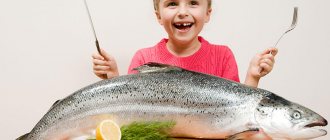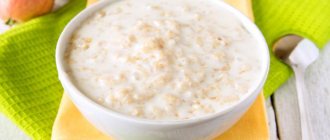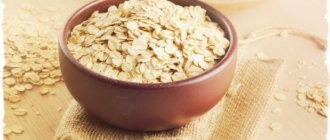High-quality and nutritious nutrition for a child in the first year of life plays a vital role in his physical and mental development. As babies grow older, they require more and more nutrients. It is especially important for a growing body to receive a sufficient amount of complete animal proteins, and here a young mother will need a recipe on how to prepare turkey for the first feeding.
When to give turkey meat
As a rule, complementary feeding starts with vegetable purees or cereals. And only after 2 - 3 months the baby is allowed to try his first meat puree. It is advisable to consult your pediatrician about the timing of introducing the first complementary foods. Usually, with breastfed children, it is recommended not to rush into complementary feeding until six months, but artificial babies can start trying the first puree as early as 4 months.
So, the child has mastered new food for himself in the form of vegetables and cereals, it’s time to start eating meat. Another important reason for the need to introduce meat into a baby’s diet is the high need for sufficient iron intake in the body.
At the age of 6 - 9 months, iron deficiency anemia is often observed in children. And eating turkey meat puree will help you avoid or cope with this problem.
Turkey for babies - a dietary delicacy
One of the best options would be to choose turkey puree:
- it is easily absorbed by a child’s fragile body;
- it has very little cholesterol;
- contains a lot of high quality protein;
- has a pleasant delicate taste;
- contains easily digestible iron;
- almost never causes allergies.
The product also contains a significant amount of omega-3 fatty acids, which are critical for the development of the baby’s brain and the formation of neural connections in it, helping to strengthen the child’s nervous system. All this further ensures the formation of better cognitive abilities in a grown-up person. The vitamin composition supplies the body with everything it needs and ensures harmonious growth and development.
Turkey meat is not a budget product. But, despite this, taking into account the mass of positive properties, it is worth spending money and choosing it for your beloved child. Its price is due to the high costs of breeding birds. Turkey meat, traditional for America, appeared in our country relatively recently. But it is gradually winning the love of our consumers.
| Energy value per 100 g of product | |||||
| Proteins, g | Fats, g | Carbohydrates, g | Calorie content, kcal | ||
| 19,5 | 22 | 0 | 276 | ||
| Vitamin content, mg per 100 g of product | |||||
| A | IN 1 | AT 2 | RR | WITH | |
| 0,01 | 0,05 | 0,22 | 7,8 | 0 | |
| Content of minerals and trace elements, mg per 100 g of product | |||||
| Sodium | Potassium | Calcium | Magnesium | Phosphorus | Iron |
| 90 | 210 | 12 | 19 | 200 | 1,4 |
Turkey is a tasty and healthy meat
Turkey meat contains a large amount of proteins that are water soluble and have virtually no collagen and elastin. Therefore, it is easily absorbed by the body.
In addition, turkey meat contains vitamins B, A, C, E and minerals such as phosphorus, potassium and iron. And, most importantly, lots of selenium and all the essential amino acids.
White meat of an adult turkey is considered the most valuable because, after cooking, the broth contains many extractive substances that cause increased secretion of digestive juices, which, in turn, improves the digestion of food.
Boiled turkey meat is useful for cardiovascular diseases and depression. It is also a good antioxidant and hypoallergenic, which is why it is first introduced into children's diets.
Turkey for first feeding: how to choose a quality product
Like any other product for a baby, turkey meat should be the freshest. In order not to make a mistake with the choice, it is preferable to choose chilled fillet. You need to choose dietary breast meat for your baby. Turkeys are large birds. Their size is significantly larger than that of broiler chickens. The weight of adult individuals can reach 35 kg, but carcasses weighing 5–10 kg are usually sold. Accordingly, the greater the mass of the carcass, the older the bird was, and its meat will be tougher. It is advisable to find the youngest for the baby.
When choosing a piece for your baby, take a closer look at the meat. It should be light, shiny, and have a pleasant fresh smell. If possible, you can press on the fillet. A fresh piece will quickly regain its shape and is perfect for making turkey meat puree.
Preparing turkey broth for the child
For a child 1-3 years old, it is permissible to prepare broth using “second water”. This method of preparation ensures that you get rid of harmful and foreign impurities. Whole first broth and first courses based on it can be offered to children over 7 years old. At this age, you can cook not only fillets, but also other parts of the bird without skin.
Broth with meat
Remove the skin from the turkey before cooking. This part will not acquire a delicate consistency during cooking, but the fat content of the broth will increase significantly, which will affect the functioning of the immature pancreas.
Broth "on the second water"
- Rinse the meat under cold running water.
- Place the fillets in a saucepan and cover with cold water.
- Bring to a boil.
- Drain the broth.
- Pour prepared boiling water over the meat.
- Simmer the turkey over low heat until cooked through, about 1.5 hours.
- When ready, add salt.
A clear, non-rich broth is what your baby needs
Do not allow rapid boiling or seething - the lower the heat, the clearer and tastier the broth will be. All valuable nutrients will remain in the broth, and the liquid will not boil away. There is no need to dilute the prepared broth with water. Use for preparing dietary first courses.
Turkey Meatball Soup
To make turkey meatballs, use fresh ground turkey.
Ingredients for meatballs:
- Turkey fillet – 200 g;
- 2 slices of white bread (preferably yesterday’s bread, not airy, but dried);
- Milk – 4 tbsp. l.;
- Water – 2 tbsp. l.;
- Butter – 1 tsp;
- Raw egg – 1 pc.
Meatball soup
Soak bread in water or milk and squeeze out excess liquid. Mince the turkey and bread twice. Add a tablespoon of water, butter, and egg to the minced meat. Add some salt. Stir. Dip a teaspoon into cold water, scoop out some minced meat, and form into a small round meatball (smaller than a walnut). Place the finished meatballs on a flat plate moistened with water.
For the soup you will need:
- Vegetable broth or poultry broth – 1 l;
- Potatoes – 1 tuber;
- Carrots – 1 small piece;
- Onion – ¼ head;
- Salt;
- Parsley;
- Turkey meatballs.
Bring the broth to a boil. Cut the potatoes into small cubes. Cut the carrots into strips. Chop the onion. Place prepared vegetables and meatballs into the boiling broth. Cook over low heat until tender – 15 minutes. Salt the finished soup and sprinkle with finely chopped parsley.
Meatballs in soup
Vegetables for children's first courses are not fried or sautéed. Add fresh herbs to the finished dish after turning off the stove. You can sprinkle parsley over the soup right in the bowl. This method will preserve vitamins in greens.
Vegetables and meatballs should be small in size so that it is convenient for the baby to chew the ingredients.
Turkey noodle or vermicelli soup
For preparation you need the following ingredients:
- Vegetable broth or turkey broth – 1 l;
- Boiled turkey meat – 100 g;
- Potatoes – 1 tuber;
- Carrots – ¼ pcs.;
- Onion – ¼ head;
- Thin vermicelli (spider web) – 2 tbsp. l.;
- Butter – 1 tsp;
- Salt;
- Greenery.
Turkey noodle or vermicelli soup
Chop the peeled and washed vegetables. Cut the cooled boiled fillet into small pieces. Place vegetables in boiling broth and cook over low heat with the lid closed until tender.
Do not let it boil too much - it destroys the vitamins! When the vegetables become soft, season the soup with noodles, add salt, and sprinkle with finely chopped parsley. Turn off the stove. Add chopped turkey meat and a teaspoon of butter to the broth. Let the soup steep for a while. Serve. Bon appetit!
Turkey puree soup
To prepare a tender and aromatic soup with a creamy consistency, take:
- Vegetable broth or turkey broth – 1 l;
- Boiled turkey meat – 100 g;
- Parsley root – 20 g;
- Carrots – 1 pc.;
- ¼ onion;
- Wheat flour – 1 tsp;
- Egg yolk – 1 pc.;
- Milk – 1/3 cup;
- Butter – 1 tsp;
- Salt;
- Parsley.
Cook turkey broth with onions and roots (carrots and parsley). Remove vegetables from the finished broth. Prepare white sauce in a saucepan: add sifted flour to heated broth (3/4 cup), stir thoroughly, add butter. Pass the meat and vegetables through a meat grinder twice or beat with a blender. Dilute the resulting mixture with broth, combine with white sauce, simmer for 10-15 minutes, stirring. Add some salt.
Into the prepared soup, cooled to 70 degrees, add lezon - beaten egg yolk with milk. This will give the soup a delicate creamy consistency. Sprinkle the finished first course with chopped parsley.
Cream soup with turkey and vegetables
Ingredients:
- Vegetable broth or turkey broth – 1 l;
- Boiled turkey fillet – 100 g;
- 2 potatoes;
- 1 small carrot;
- 10 florets of broccoli or cauliflower (you can use a mixture);
- Butter – 1 tsp;
- Salt;
- Greens to taste.
Cut the vegetables, cut the cauliflower or broccoli into small florets. Place diced potatoes and carrots into boiling vegetable or meat broth. Cook until the root vegetables are soft. Then add broccoli and/or cauliflower to the broth. Puree the prepared vegetables in a blender, adding broth one tablespoon at a time. Bring the soup to the desired consistency by gradually adding broth. Pour the soup into a thick-bottomed saucepan, add a teaspoon of butter, and bring to a boil over low heat, stirring. Add salt to taste. Add chopped herbs to the plate in portions.
First courses for children (as well as any others) should not be salted “from the heart”, since children have immature and sensitive kidneys, and babies are more susceptible to salt in the dish. Also, do not use exotic seasonings or spices.
Moreover, do not flavor soups with seasonings with monosodium glutamate, such as Gallina Blanca or 10 Vegetables. Read the ingredients on the package.
Prepare a little fresh food for your baby every day. Choose quality products and use our recommendations and recipes. Everything will definitely work out. Bon appetit!
How to preserve all the beneficial properties
Of course, it is very advisable to prepare fresh chilled meat puree for your baby every time. But it is not always possible to constantly buy tiny pieces. Therefore, many people buy a large piece and freeze it in portions. To do this, you need to cut it, put it in separate bags and put it in the freezer.
You can do it differently. Grind the fillet twice in a meat grinder, roll into balls and freeze on a tray. Then transfer the finished meatballs into a bag and store them.
Another popular storage method, when you don’t want or can’t prepare a fresh portion every time, is to freeze ready-made puree in small containers. And before lunch, just defrost a small amount.
In any case, storage of a frozen product should not be delayed longer than one month. It’s better to limit yourself to a maximum of two weeks. Then you can prepare a new portion.
Rules for introducing complementary foods
As already mentioned, meat is introduced 2 - 3 months after trying the first spoon of the first product. By the time they start complementary feeding, many babies already have one tooth. And at 6 - 9 there may already be several of them.
Each new product is introduced very carefully, carefully monitoring the baby's reaction. There's no need to rush here. Manifestations of intolerance may vary. These include allergic reactions, changes in stool, and even unusual behavior of the child.
Therefore, complementary feeding is always started with half a baby spoon on the first day. Then the amount is gradually increased. Approximately within 5 - 7 days. Then you can start trying a new product. To do this, part of the already familiar puree is gradually replaced with part of the unfamiliar, also bringing it to normal. All children are different, and the portions for each will also be different. On average, a baby eats 150 grams of puree at a time.
It is advisable to give any new puree or unfamiliar porridge no later than lunch time. In this case, it becomes possible to carefully monitor the reaction throughout the day. The introduction of a new product is excluded 3 days before and three days after preventive vaccination, as well as during the baby’s illness.
The meat is introduced in the same way as all previous products, starting with half a spoon. Usually, to make it easier for the child to get used to the new taste and texture of the dish, it is mixed with the already favorite vegetable puree. Dietary fiber from vegetables will help it be better absorbed. The daily intake depends on age. By the age of one year, a child can eat up to 100 g of meat per day.
Features of working with turkey meat
The turkey cooking process can be organized in different ways. It is necessary not only to determine the processing time for the component, but also to take into account the following points:
- For soup or jellied meat, cook the meat for at least 2 hours, only in this case the broth will be thick and rich. For such dishes, it is recommended to select pieces with skin. We definitely add onions, celery and carrots to the water, but this should be done about an hour before the end of the heat treatment.
- If you plan to use boiled turkey fillet in a salad, then it should be additionally fried in a small amount of vegetable oil until a soft crust appears.
- Poultry meat, regardless of whether drumstick or wing is used, will be perfectly soft if you boil it not in water, but in milk.
- Even fillets can be turned into tough rubber if cut incorrectly. To make the meat cut into pieces soft, you need to work across the grain, not along it.
- If the product is boiled for soup or further use in other dishes, it is recommended to remove the skin. Otherwise, the component, and the broth, will be too fatty.
- When the bird is boiled for later addition to the second dish, it is placed in boiling water. If you plan to make soup from it, then the component is placed in cold water.
Despite the fact that it is traditional to salt the boiling water in which the meat is boiled, in the case of turkey it is better to avoid this. It is necessary to either salt the product immediately before putting it in water, or add salt to the finished component. And when the soup is cooked, the turkey is dipped in salted water and added only when the bird is ready.










